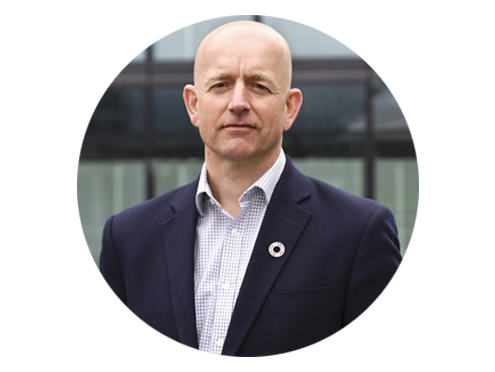How Companies Can Get Sustainability Right


Sam Baker is a London-based partner at Deloitte, where he has been a strategy consultant since 1988.
He advises organisations on purpose, sustainability, and transitioning to a low-carbon future. In this interview, he shares insights on what companies are getting right in terms of their sustainability challenges – and what they are getting wrong.
What are you involved in at the moment? Tell us about it.
The International Business Council of the World Economic Forum, supported by Deloitte and the other members of the “Big 4” professional services firms, has been have been leading an initiative to advance delivery of the SDGs and stakeholder capitalism through better corporate ESG reporting. I have been leading the Deloitte input, with a particular focus on the metrics and disclosures related to Governance. The project has been going on c. 18 months and has provided a fascinating insight into the opportunities and challenges in the reporting domain; the white paper published in September was the result of mass socialization of our initial Davos paper with both companies and investors.
In addition to the work with WEF, I am leading an initiative called the “Goal 13 Impact Platform”, named after the 13th SDG :“Climate Action”. It is designed to stimulate corporate learning and collaboration on taking action against climate change. It’s a partnership between the Confederation of British Industry, Deloitte, Chapter Zero, The Prince’s Accounting for Sustainability Project, Dell Technologies and the Met Office. This information-sharing platform holds data on company targets, drivers of change, organization, climate actions and programmes, and barriers and lessons learned. We’ve started in the UK with over 900 companies contacted and over 200 actively engaged, and are now pushing out into other markets including Italy. The interviews are tremendously insightful, and it’s encouraging to see how motivated organisations are to collaborate with each other.
What are some of the main challenges company leadership faces when setting and implementing sustainability goals?
We can classify challenges in terms of external and internal.
Arguably one of the most critical external challenges is a common language to talk about impact, sustainability and specifically climate change. Making progress against the world’s challenges is a complex task requiring governments, NGOs, companies and the general public to work together. We need a common language to set common goals, discuss their implications and design programmes of action to progress against them. We can certainly see progress in the ongoing efforts to harmonise how organisations report against ESG (e.g., the WEF project, the EU efforts to create a common taxonomy), and how they set climate targets, such as adhering to the SBTi recommendations, but we’re at the early stages of this journey.
A second key challenge for companies is their interdependency on policy. A lack of coherent policy, for instance within and between countries on their energy transition, creates uncertainty for companies and can constrain ambition and diminish investment.
The greatest internal challenge to setting and implementing sustainability is ensuring it’s an integral part of the business model aka the formula for success, and strategy. This requires significant effort, judgement, and choice. Too often sustainability is “bolted on,” creating trade-offs with the way a business considers its approach to long term value creation as opposed to a key part of it, leading to sub-optimisation of both.

A Deloitte study conducted by Forbes Insights says that in 43% of companies, it is the CEOs who is responsible for implementing sustainability strategy. How can CEOs be a little bit gutsier when advocating for these issues to their boards?
I see encouraging evidence that CEOs are increasingly courageous when it comes to setting climate change targets, and this appears to be accelerating in the run up to COP 26. The study suggests over one- third of executives have set carbon reduction goals, and nearly all (88%) executives say they have set environmental goals in areas other than carbon. Encouraging… but more to be done.
The CEO ultimately answers to the board, so the board’s leadership is important here too. Boards need to evolve from a “compliance driven” approach to one that integrates value-enhancing sustainable ESG practices directly into the business through direct and regular board oversight, executive compensation, and consideration of sustainability/ ESG given the same attention as short term financial success.
As a follow-on question from above, do you have any advice for managers how to advocate/implement this kind of innovation?
Clear communication of why sustainability and climate change are critical to long term value creation is key to effective advocacy.
With this established, management performance and attendant incentives need to incorporate sustainability and climate change goals; at all decision-making levels in the organisation.
But this needs to be both hearts and minds: management should become “sustainability evangelists” inside the organization in terms of education and engagement, and outside with business partners be they customers or suppliers.

Digital is an increasingly important enabler of climate initiatives, greater focus on climate initiatives happens at a time at which most organisations are becoming more sophisticated at embedding digital technology, partly catalysed by COVID-19. What are some of the ways that companies are using digital to enable their climate initiatives?
I am really positive about the potential for digital technologies to contribute, and led a project last year for GESI that produced a report: Digital with Purpose, which showed how the development and deployment of digital technologies can help drive achievement of the SDGs. We have seen an acceleration of understanding of the role of technology in combatting climate change, and indeed contributing to it if we are not mindful, over the COVID era.
A simple example is the increased substitution of CO2-heavy travel with digital communications, whether internally, in external functions like sales, or as a core product or service e.g., conferences.
We are also increasing improvements in the energy efficiency of buildings, infrastructure, production processes, and across entire sectors. Data is the raw “material” that facilitates the design and implementation of these changes, enables measurement and enhances communication.
Lastly, and perhaps most importantly, digital and data are at the core of innovation and new business models e.g., the multiple businesses and initiatives currently looking at ways of creating a market for farmers to be rewarded for improving their soil quality and its CO2 sequestration capacity.
A lot of companies have stakeholder dialogue. Any ideas guidelines or tips on how to make this listening process better?
Stakeholder listening should be designed in the context of the company’s overall goals and its corporate purpose, keeping the end use of the product or service at the forefront.
Close attention should be paid to the definition of “stakeholders”: the traditional groupings of for example customers and investors may be too broad to be useful when they are typically heterogeneous populations.
The classification of issues, and how they are framed, again needs deep thinking. I would always advocate starting with the SDGs, and then applying a clear and transparent approach to ascertaining what’s deemed material in the longer term to both stakeholders and to management.
Definition of stakeholders, classification of issues and approaches to materiality will evolve as the business and its context evolves, and so developing a well-structured framework that allows this evolution is a critical support to maintaining consistent and cohesive communications over time.
The rate of change can be dramatic -- like for example investor interest in climate change, or consumer interest in plastics -- and so stakeholder engagement should be set up as a dynamic, value creating approach and system rather than an annual desk exercise.
All these refinements require resources; the business case is clearer if the stakeholder assessment is seen as a critical process for engaging with and educating stakeholders rather than, at the other end of the spectrum, an internal, compliance based, risk orientated exercise.

What are companies getting right? What are they getting wrong?
There’s lots of say about this, and perhaps easiest to see where companies are getting it wrong!
Sustainability has historically been too focused on company operations and supply chains. But, perhaps in every case, the impact of products and services is wider reaching and of more impact than operations. Too many companies simply fail to account for the impact of their products and services. This is particularly serious when they don’t assess, and address, negative impacts.
A second, general criticism is the way performance against sustainability is communicated. Demonstrating positive world impact is hard, and requires plenty of collaboration with others. It’s a domain that lends itself to self-enquiry, to learning, and to constant improvement rather than too many celebrations of success.
A final criticism is the struggle to clarify purpose and explain how it is integrated in the business model and strategy, as I have noted.
On the positive side, we are seeing a huge effort by companies to bring sustainability into the heart of their businesses. And there is a growing awareness that the greatest and most existential challenge we face, global warming, can only be achieved through collaboration.




